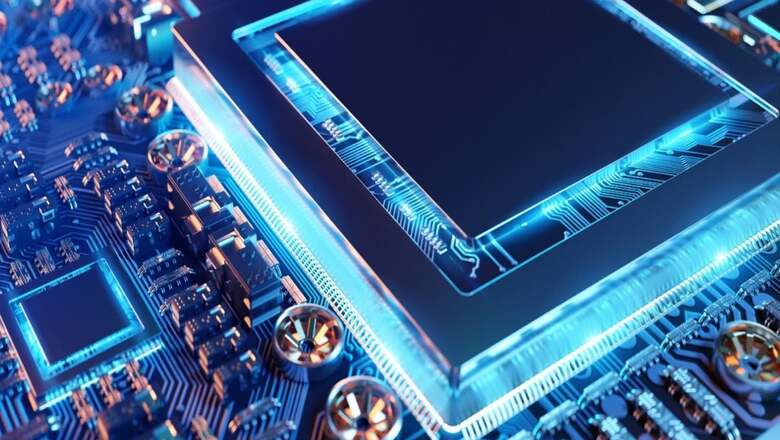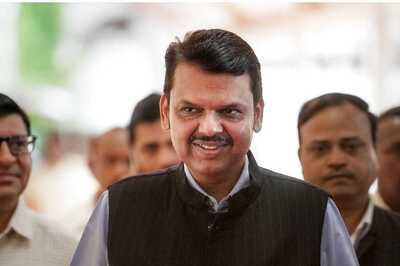
views
As the spotlight turns towards India, it is the nation’s time to shine as a vibrant semiconductor hub, strengthening global supply chains and reshaping the dynamics of chip manufacturing. The SemiconIndia 2023 conference serves as a strong indication of India’s unwavering determination to train the younger generation, propelling the country to the forefront of this vital industry.
During his address at the conference, Prime Minister Narendra Modi aptly captured the rapid transformation that has transpired within just one year. The question no longer lingers as “Why Invest in India,” but resounds with a resolute “Why not invest in India.” This significant change shows how much India has progressed and makes global stakeholders eager to support and be a part of the country’s growing semiconductor industry.
Within the intricate tapestry of cutting-edge technology, semiconductors emerge as diminutive yet indispensable keystones, forming the bedrock for the ever-evolving domain of computing and electronic marvels. From the ubiquitous smartphones and laptops that have become extensions of ourselves to the vast network of interconnectedness we know as the internet, semiconductors weave the very fabric of our interlinked world. Beyond their role in internet infrastructure, semiconductors permeate a vast array of electronic devices.
Moreover, their transformative power extends to the realm of healthcare, where they empower life-saving medical equipment and implantable technologies, like pacemakers and insulin pumps. Additionally, semiconductors find utility in harnessing the sun’s energy through solar cells and play a vital role in power electronics, facilitating the creation of advanced sensors for multifaceted applications.
India Semiconductor Mission is a strategic initiative that resonates harmoniously with the theme of India’s G20 aspirations – One Earth, One Family, One Future – as well as the ‘Make in India’ campaign. This ambitious mission not only shows India’s dedication to utilising its knowledge, capacity, and abilities for the benefit of the world but also demonstrates the country’s strong determination to reduce imports and achieve self-sufficiency.
The prime minister rightly summarised, “Our ‘Make in India’ initiative inherently signifies not just domestic production, but also the creation of goods with global impact.” The SemiconIndia Conference, held from April 29 to May 1, 2022, was a pivotal step in bridging industry and government for collaborative policy formulation. It aimed to propel India into a leading role in the upcoming tech revolution.
India’s commitment was evident through its $10 billion allocation to the India Semiconductor Mission. This investment fostered a conducive environment, cultivating a robust semiconductor industry and positioning India as a global leader. India has emphasised the long-term nature of this endeavour, underlining the meticulous planning and collective efforts to establish India as a premier chip design and manufacturing hub. Signifying a paradigm shift, global giants like Applied Materials invested substantially in India. Their pledge of Rs 1800 crore and the acquisition of land in Bengaluru for manufacturing facilities underscored India’s ascent in the semiconductor realm.
Since 2014, India’s electronic manufacturing has skyrocketed from under $30 billion to over $100 billion today. In the last two years alone, electronics and mobile device exports have doubled. Mobile manufacturing units have surged from a mere two to over 200. Additionally, the number of broadband users has seen a remarkable increase from 60 million to an astounding 800 million, while internet connections have exceeded 850 million.
Backed by an allocation of Rs 76,000 crore, the Central government’s policy for semiconductor manufacturing introduces a financial boost. It extends a substantial incentive of 50 per cent of the project expenditure for the establishment of semiconductor fabs at any level within India, along with corresponding incentives for the establishment of display fabs within the nation. Prime Minister Modi underscored the ongoing Industry 4.0 revolution, which is resonating worldwide. India’s population is displaying an inherent inclination and enthusiasm for embracing technology. Across various sectors such as healthcare, agriculture, and logistics, India has adeptly harnessed technology. The nation’s reservoir of adept engineers and innovative designers stands as a powerful asset.
In the contemporary landscape, India, being the world’s largest democracy has emerged as a reliable partner in fortifying global supply chains, earning trust on an international scale. The utilisation of semiconductors in India has witnessed a substantial upsurge, propelled by domestic companies such as Tata Consultancy Services, Infosys, Wipro, and HCL Technologies, which have been instrumental in fostering this expansion.
Every new opportunity brings its fair share of challenges. Within the dynamic domain of the semiconductor industry, a paramount obstacle emerges due to constant innovations and quick technological shifts. This intricate sector not only demands significant money for investment but also grapples with the intricate puzzle of complexity. The past SemiconIndia Conferences have marked important milestones in this journey. As India aspires to become a global hub for semiconductors, the need for enduring and steadfast policies becomes self-evident. A seamless and uninterrupted stream of vital raw materials further underpins this ambition.
For India to succeed in this field, it is important to enhance the existing strengths and mitigate vulnerabilities. This will not only help us advance technologically but also boost our national security and independence. Many rightly say that semiconductor chips are the heart of today’s information age, and India has a chance to tap into this potential.
Divya Singh Rathore is a public policy professional. She tweets at @_divyarathore; Suhani Jain is an undergraduate student pursuing B.A. (Honors) in Economics at Lady Shri Ram College for Women, University of Delhi and currently holds an internship position at NITI Aayog. Views expressed in the above piece are personal and solely that of the author. They do not necessarily reflect News18’s views.



















Comments
0 comment